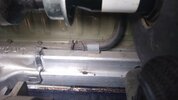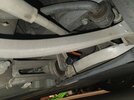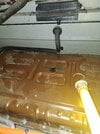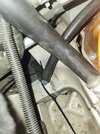There are some definite trends with early battery packs failing in earlier Model S vehicles... from day 1 builds up to about Q4'2014 and some even Q1'2015... and any cars that have had Tesla-refurbished packs installed.
The issues are all pretty much the same thing in one form or another, almost always related to moisture ingress into the battery pack via deteriorated side rail vents (which are supposed to be sealed one-way vents for safety purposes). Secondary would be moisture related rust and corrosion of the top-front of the battery pack cover due to years of standing water on top of the battery pack from the air-conditioning condensate drain line design on earlier cars which drain directly on top of the battery pack.
I figured I'd do a quick thread on this, as 057 currently has
over twenty customer vehicles in the shop (yes, our shop is > 30,000 sqft), all of them with essentially the same battery issue, all out of OEM warranty, and these folks have very few options at their disposal.
First, I want to point out that I don't think Tesla is under any obligation to do anything about this. I don't think they did anything wrong, and I don't think they're going to do anything about it. I'm not sure they should do anything about it either, as they've already improved the design and this isn't really an issue on newer vehicles.
That said, I can see a huge percentage of early S vehicle being affected by this problem. Tesla already "fixed" one variant of this with the brick 6 emulation for when the sense wire on a single module is damaged (99% of the time by corrosion from moisture). Details in a writeup I did a while back
here.
On our end at 057, we're refurbishing these batteries when possible, and replacing them when not. Replacements have to be newer than the problem era in order to make sense, which makes it pricier, especially since we can't just go to Tesla and buy a battery pack. We've been updating the side vents on older pack chassis, and have even been doing full transplants of hardware from older an chassis into a newer one in order to mitigate these issues for our customers.
We've already done some proactive service like this for some customers, which we're going to start offering at as low of a price as possible to our customers as a scheduled service option... although right this second we don't have the manpower to do so and officially pull the trigger on this. We're pretty swamped already (not a bad problem to have for us, but I digress...)
Where I think Tesla
is doing something wrong is that they don't seem to always correct the underlying issue on their refurbished batteries that they sell to customers. Despite usually offering some kind of warranty on their somewhat expensive refurbished replacements, it doesn't make sense to me to not always correct the original issue since even with a warranty it would suck to have the downtime yet again. So you could get one of these refurbished replacements and end up in the same boat a few years later.
Not 100% sure what the best solution is for this, but here's where I'm at:
Right now, we're doing testing of some custom-made parts to be able to retrofit into these older battery packs to prevent the moisture ingress issue and better seal the pack for the long term. As part of the service we'll test for existing moisture ingress, use some custom equipment to remove any moisture from the battery pack, and give the customer an estimated idea of what we expect the long term health of their battery might be afterwards. We eventually hope to offer this as a preventative maintenance service to customers as a one-day service (scheduled in advance, of course) for < $1k, possibly by the end of the year. In my opinion, this is going to be an essential service for these vehicles once we've got it streamlined.
Depending on the level of moisture measured, we'll also offer the option of a full rebuild of the battery pack. This would be a longer process and a bit more expensive, but we would then inspect and test all of the 100+ sense connections within the battery, update other components as needed (contactors, fuse, etc), and basically do a full refurbishment on the battery pack. While we're not going to in any way
require customers to go this route, the issue is that the ultrasonic welds Tesla uses on the sense connections are pretty sensitive to moisture and can fail unexpectedly even after we remove internal moisture and correct the underlying ingress issues. Once above a certain amount of moisture, which we believe we have sufficient data to have honed in on, that failure is pretty much imminent, even if it can be delayed.
Anyway, just wanted to get some feedback on this. We've gotten a lot of direct customer feedback thus far on this and pretty much everyone thinks it's an excellent plan, but figured I'd throw it out here and get some thoughts on interest and such before we really start dumping resources into making this happen.






